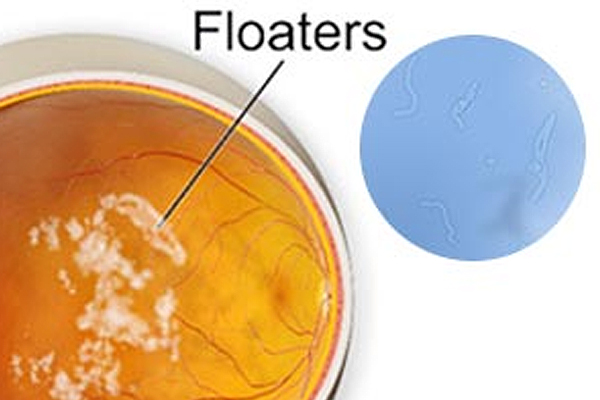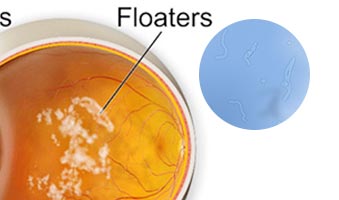

As you age or if you are near-sighted (have fuzzy distance vision), you are more likely to see flashes. Sometimes, flashes are signs of other eye problems that need care.
Floaters look like dark specks, clouds, threads, or spider webs moving through your vision. Most people see them once in a while. Floaters may be pieces of gel or other material floating inside your eye. They are usually harmless.
The older you get, the more likely you will notice floaters. An eye injury or surgery can also cause floaters. If floaters appear suddenly or greatly increase in number, they may be a sign of an eye problem that needs care.
Most often, seeing a few flashes and floaters is normal. Also, some people may notice them for a while after eye surgery. Most flashes and floaters require no treatment. But sometimes they can be signs of a serious eye problem. To find out, you may need an eye examination.
See your eye doctor if you notice any of the following symptoms:
Your eye doctor can check your eyes to be sure the flashes or floaters are not signs of a more serious eye problem. At an exam, your doctor will:
Flashes that appear all of a sudden or greatly increase in number may be a sign of a problem. The vitreous pulling too hard on the retina may cause these flashes. This can make the retina tear or detach from the back of the eye. Rapid vision loss is bound to follow. Your eye doctor can find the cause of flashes and decide if treatment is needed.
A sudden increase in the number of floaters you see may be a sign of a tear in the retina or of some other eye problem. Over time, a tear can cause the retina to detach from the back of the eye. Your eye doctor can find out what is causing the floaters and suggest a treatment plan, if needed.
The older you get, the more flashes and floaters you may see. They are usually harmless. But if you suddenly notice more of them, it may be a sign of an eye problem that needs care. Get regular eye exams to be sure that your flashes and floaters are normal and to protect and preserve your vision.
Copyright © 1987-2024 Ojas Eye Hospital All rights reserved | Privacy Policy
*Disclaimer: All information on www.lasikindia.com for informational purposes only and is not intended to be a substitute for professional medical advice, diagnosis, or treatment. Always seek the advice of your physician or other qualified health care provider.